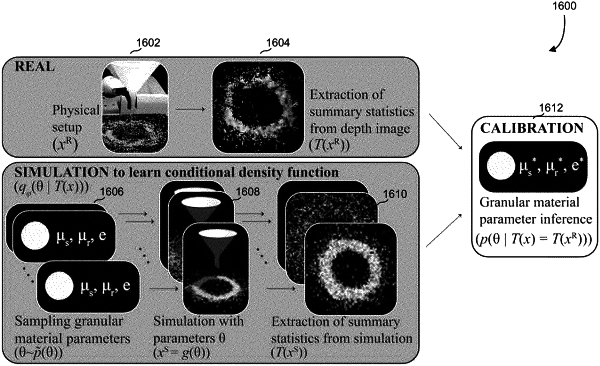| CPC B25J 9/1671 (2013.01) [B25J 9/163 (2013.01); B25J 11/008 (2013.01); G06F 17/18 (2013.01); G06F 18/214 (2023.01); G06F 30/27 (2020.01); G06N 3/08 (2013.01); G06N 7/01 (2023.01); G06T 7/0004 (2013.01); G06T 7/77 (2017.01); G06V 10/764 (2022.01); G06V 10/82 (2022.01); G06V 20/56 (2022.01); G06V 20/64 (2022.01); G01N 15/00 (2013.01); G06T 2207/10028 (2013.01)] | 27 Claims |

|
1. A method of simulating a granular material, using a processor comprising one or more arithmetic logic units (ALUs), the method comprising:
deriving, from at least one recorded observation of an aggregation of the granular material, a derived set of summary statistics corresponding to motion of one or more grains of the granular material;
providing the derived set of summary statistics to an inference engine implemented using the one or more ALUs, the inference engine to infer a first posterior probability distribution corresponding to at least one physical characteristic of the one or more grains of the granular material;
applying the first posterior probability distribution to a simulation process that outputs a simulated set of summary statistics;
comparing the derived set of summary statistics to the simulated set of summary statistics to determine a comparison;
using the comparison to determine a revised posterior probability distribution based on the first posterior probability distribution, wherein the revised posterior probability distribution is over a space of possible physical characteristics of the one or more grains of the granular material; and
simulating the motion of the one or more grains of the granular material with the at least one physical characteristic based at least on the revised posterior probability distribution.
|